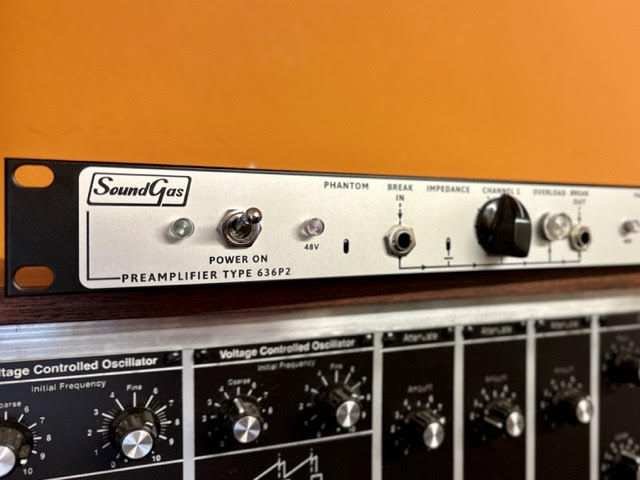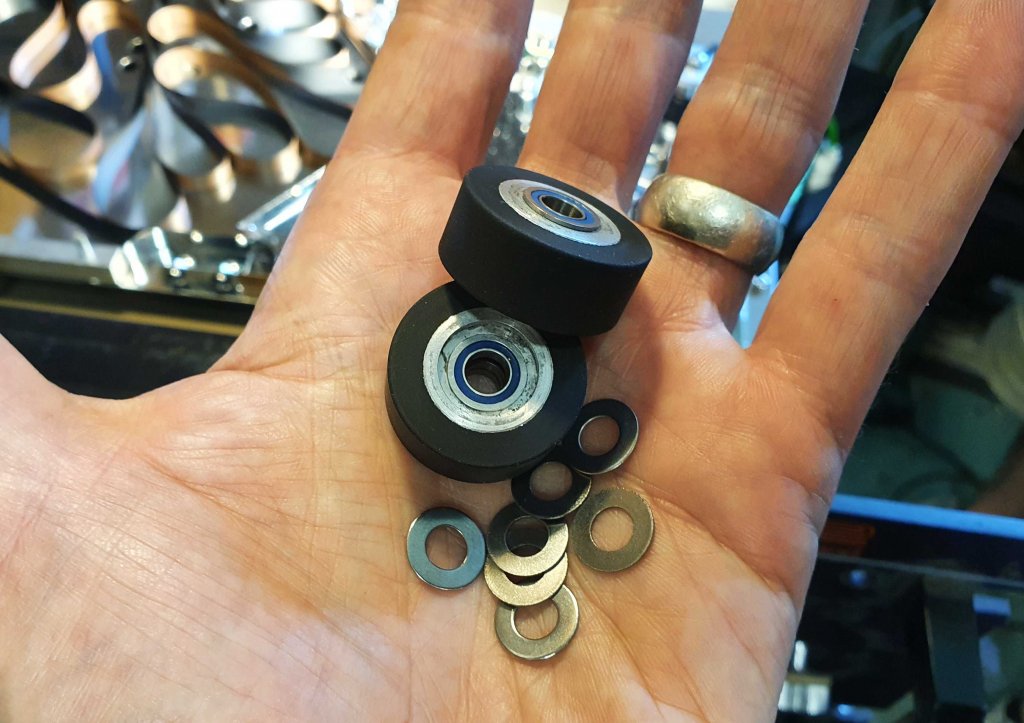
Choosing a Vintage Mixer
A demo-heavy resource in which Tony sings the praises of the humble compact vintage analogue mixer. For this first foray we’ve covered some of our favourites from Teac/Tascam, Boss, Sony, Yamaha and Midas, but there’s lots more to add, when we have time…
NECESSITY IS THE MOTHER…
We’ve been exploring and rediscovering vintage small footprint analogue mixers. Partially inspired by the characterful old Roland spring reverb mixers that we know and love, but spurred on when Tony needed to set up a home studio facility during lockdown and wanted something that would work for live dub mixing as well as testing.
The brief was to find something with character and/or higher build/sound quality and with a more extended feature set while still remaining compact and affordable. Part of the issue with these old beasts is the amount of tech time it can take to go through them: many are tired and worn and sometimes beyond economic repair – if they are to be fault-free and reliable. Components are reaching the end of their life (or are well past it and have already failed), so very often a ‘cheap’ example only serves as a reminder as to why it was abandoned in the first place. Often much of the cost of the units we sell is the time our techs take to bring them back to reliable operation (and that for every handful of units we sell, we have to sacrifice another for parts).

The results of this exploration have been appearing on our site and Instagram feed for a while now: we’ve rediscovered some real gems and have a lot of love for the ones we restore and sell. You’ll often find a mix of compact consoles designed for home/prosumer use with open reel recorders (like the Tascam/TEAC series), and made-for broadcast units (such as the Sony MXP series). The latter might be a little less characterful but they benefit from higher design/build quality and genuinely excellent pres and eq that make for a very refined sound (at a price point comparable to a modern Chinese digital unit, but a build quality far exceeding one).
Whether you’re looking for a compact front end for your DAW set up, something to sum your synths/drum machines, or a dub-inspired rig, you should find a few carefully selected and overhauled units on our site – naturally all backed by our guarantee of your sonic satisfaction. Of course, this does not come cheap, so if you don’t mind a few failing channels/pots/sockets and a bit of snap crackle and pop, then well-used examples can be found in Gumtree/Craigslist/yard sales at knockdown prices. You won’t see anything like that at Soundgas (unless we’re clearing out a few ‘experiments’) – because tech time is precious, we only take on exceptional examples that we’d want to use in our own set ups.
A couple of videos featuring Sony MXP-series mixers in action:
CLEANER, QUIETER, SMALLER, CHEAPER
Those of us who’ve served a few decades in smaller studios are very familiar with the arc of ‘progress’ regarding noise. From the late 90s into the new millennium, the rise of ever-cheaper interfaces/software meant that many happily traded old prosumer analogue boards for new/cleaner digital gear. Few cast a backward glance at equipment that, while well designed and built, was often viewed as being too noisy. We were sold new gear that was ever more clean and transparent. Eventually we arrived in that promised land in which anyone with a modest budget and some talent could record and mix using a computer/interface and achieve low-noise results that had hitherto been the preserve of larger commercial facilities. We could now spend hours painstakingly removing unnecessary and unwanted noise/spill from recordings in pursuit of ever-greater clarity. This progress may have suited some forms of music, but for others less was definitely not more.
BRING (BACK) THE NOISE
Those of us whose tastes deviated from the ‘clean is good, noise is bad’ dogma, found ourselves seeking out older/outmoded equipment to add back in some of that lost essence. I recall ‘finishing’ a digital mix many years ago and feeling it was missing something: it sounded sterile. I tried mixing in some low level noise/hiss from cassette tape and found that I preferred the end result. Most of the music I enjoy has some noise and, if not actually recorded onto tape, usually sounds as if it was. Soundgas was born of this search for noise, character and warmth: if you employ machines with soul to create sounds, I find that more often than not magic of the unexpected occurs. Fast forward to today and the best plugins carefully and in great detail replicate all the nuances of old hardware, very often with the option to dial back in some of that ‘lost’ noise.
SPRING THING:
ROLAND VX-55, VX-60, PA-60, PA-80 AND MORE…

Expensive vintage consoles are beyond the reach of most, but there’s a great deal of mileage to be had from quality vintage prosumer (and sometimes from cheaper consumer) mixers. It’s a good few years now since I first stumbled on my first old Roland mixer: I ‘discovered’ it because I needed a replacement spring tank for a Space Echo, but found it was far too good to be a mere parts donor.
We at Soundgas have long been advocates of various old Roland spring reverb mixer amps such as the VX and PA series. Like many older hardware mixers, they bring sheer hands-on creative fun to a session and their warmth, grit and texture is not easily replicated digitally. In addition to mic/phono preamps that beg to be abused and yield pleasing amounts of saturation when overdriven (demo below), there’s good tonal shaping from the EQ section and of course that classic spring reverb sound that they share with the Roland Space/Chorus Echoes. Even though the humble VX-55/60 are mono – six in, one out – there’s something about them that sounds immediately ‘right’ – the track ‘Four Echoes And An 808’ below demonstrates this perfectly:
I CAN SEE FOR MILES:
YAMAHA EM-90 & EM-90A

For those for whom a mixer with EQ, mic pres and spring reverb is never enough, there’s the Yamaha EM-90: a mixer complete with onboard funky beatbox that featured on some extraordinary Miles Davis’ recordings (and the slightly later EM-90A: that’s both above along with a Roland from the same era).
This groundbreaking mixer/beatbox/spring reverb series was used by Mtume to astonishing effect when he played with Miles Davis (who’d been gifted this, along with a YC-45D organ by his Japanese tour sponsors, Yamaha) on the live Agharta, Pangea and Dark Magus recordings. Mtume put it through his Mu-tron Bi-Phase and controlled it with a volume pedal, using the beatbox more for texture (‘tapestry’ as he put it) than rhythm. Read more about these incredible recordings in this excellent article from The Quietus. https://thequietus.com/articles/17152-miles-davis-agharta-pangaea
We love the spring reverb section and enjoyed having a pair of them so we could route the beatbox back through the mic pres (just because we could)…
KING OF THE BEATS:
BOSS KM-40, KM-6A & KM-60

Roland’s mixers aren’t the only ones that work sonic magic: their younger cousins from Boss are rightly very sought after for their colouration options, especially amongst electronic musicians. We’re big fans of routing a drum machine’s outputs through a Boss KM series for effortless instant vibe. We’ve been comparing the KM-60 (the daddy of the range with an effects send on each channel) with the KM-6A/B and the more pared-down KM-40. All sound very good, and while it seems the 6 has the sonic edge, the effect sends on the 60 are just golden – so many possibilities from such a compact unit.
THE MIDAS TOUCH:
GERMAN-BUILT MIDAS VENICE CONSOLES

Much of what’s preceded was inspired by my continued search for a relatively inexpensive mixer with the right combination of features and character for home use. This was supercharged when Covid hit as I needed to reinstate a more professional set up in my old home office/studio. I’d long wanted to try a Midas Venice which, while ostensibly a live desk (Dr Huw has long sung their praises), are high quality rugged, repairable and built for a hard life on the road (this is a historic view – they are now made in China as part of Behringer’s Music Tribe Group). Sadly more of these consoles are becoming available as production and hire companies suffer the ill-effects of Covid-19. We acquired four a few months ago, including a Midas Venice F-24 which boasts an onboard 24 bit Firewire interface which I’d earmarked for my home set-up. This German-made solid and compact analogue desk with six sends and parametric eq (plus 24 channel interface) seemed a perfect solution but alas, like many other hastily convened home set-ups, space is at a premium and I opted for a 16 channel 160 (which I love). Right now, these must be the biggest bang you can get for your buck in analogue consoles.
TASC MASTERS:
TEAC MODEL 3 & M-30, TASCAM M-208 & M-216, AND MORE…

The M series mixers from Tascam and Teac are proving firm favourites at Soundgas. I took a Tascam M-208 (which you can see above, along with the M-216) home when I first began this latest round of investigations and it has not come back. Elegantly laid out and rather fetching in discrete 80s brown livery with funky colour-coded knob caps and a gorgeous quad of backlit VU meters, even if it sounded dreadful (which it doesn’t), I’d still be tempted to keep it. These are great workhorses, and capable of adding in plenty of character and colour when pushed. Yes, they’re now all in need of work to be at their best, but once recapped and serviced they make very pleasing companions.
The M-208 and M-216 can don’t have Direct Outs as standard, however they can added to every channel. We do this on the ones we sell, but for anyone who knows their way around a soldering iron we also put all the info on what the Tascam Direct Out Mod does and how to do it in an article.
Some of the less common earlier Teacs such as the Teac Tascam Series Model 3 are really very good – from an era when home recording was not a byword for cheap and disposable, these units look and feel really good. While I’m not suggesting these would be weapon of choice for classical recording, those noisier electronic neighbours who love their music with some grunt and gruft will find much to love leaning on the faux leather armrests of their Teac M-30 during mixdown…
NOT VERY PORTASTUDIO:
TASCAM 388 STUDIO 8

If space wasn’t an issue, I’d have one of these. The Tascam 388 Studio 8: dating from 1985, this was the first combined eight track mixer/tape machine and is definitely not a Portastudio! I’ve previously shied away from them as most have had long hard lives, but when a barely-used example was snuffled out by our gear hounds, I couldn’t resist. They’ve become rather popular of late – perhaps unsurprisingly given their use by such varied luminaries as Dan Auerbach, Alex Turner and Madlib – and prices have been climbing. I wouldn’t take on a well-used example for Soundgas – even though parts are not usually an issue for these machines, finding people who can work on them becomes harder with each passing year. But a super clean, low-use beauty? Count us in!
This review from a pre-Sound-On-Sound Paul White tells you much of what you need to know.
======
That’s all for now. More to come as we expand on some of the sections above to detail some of the differences between models…







